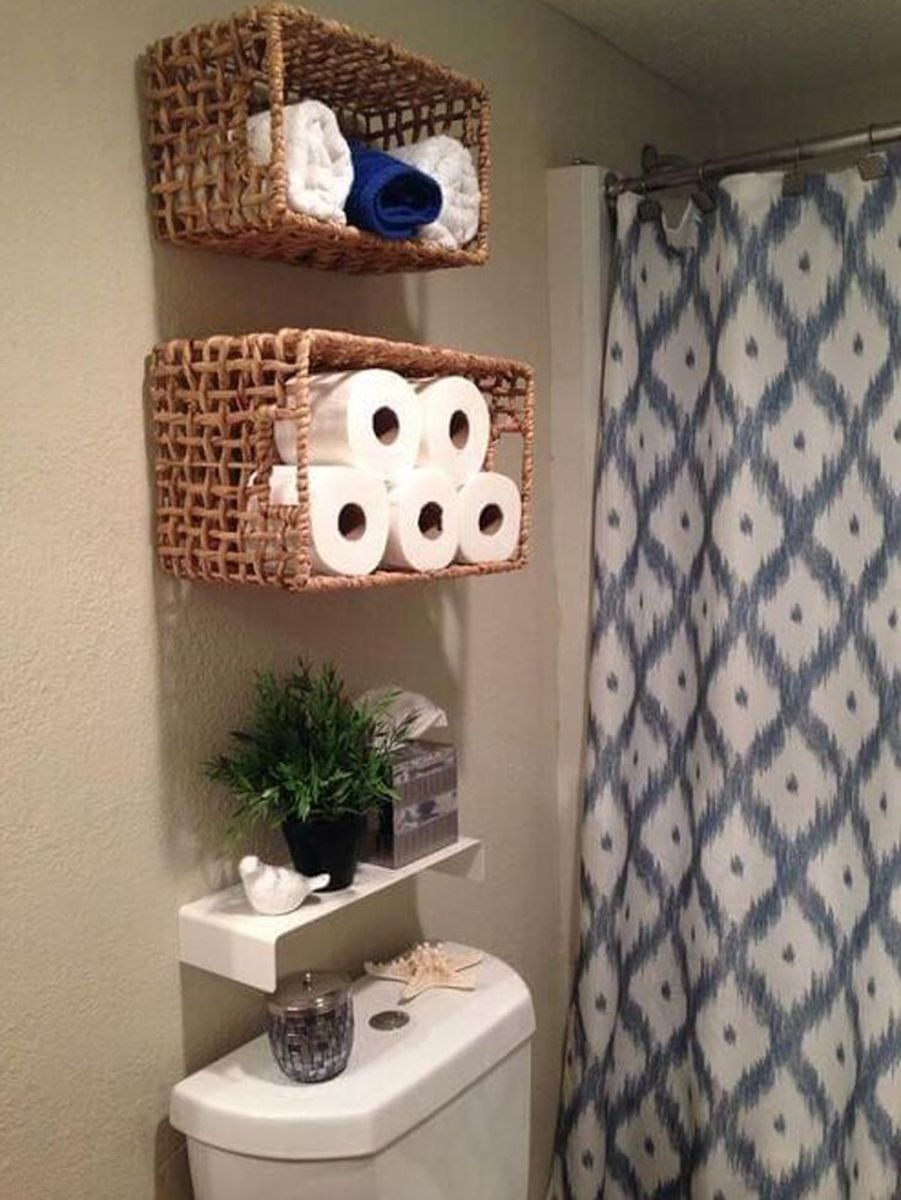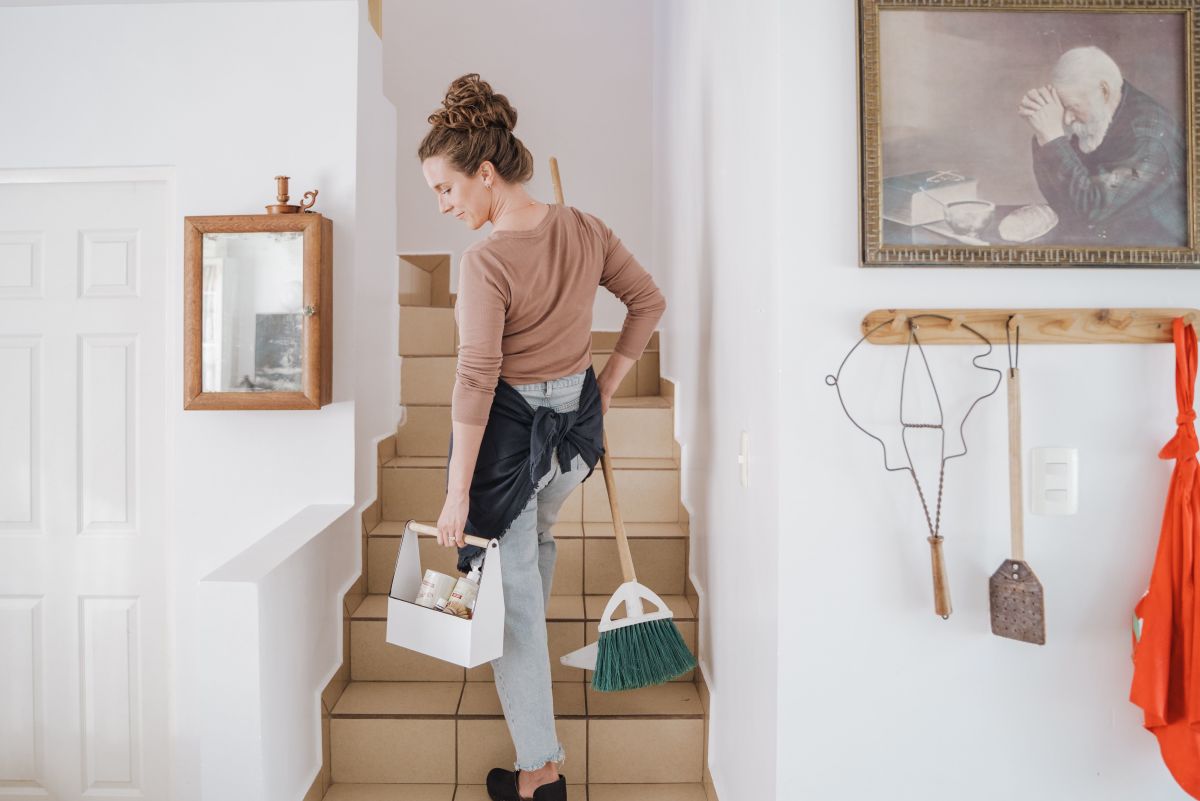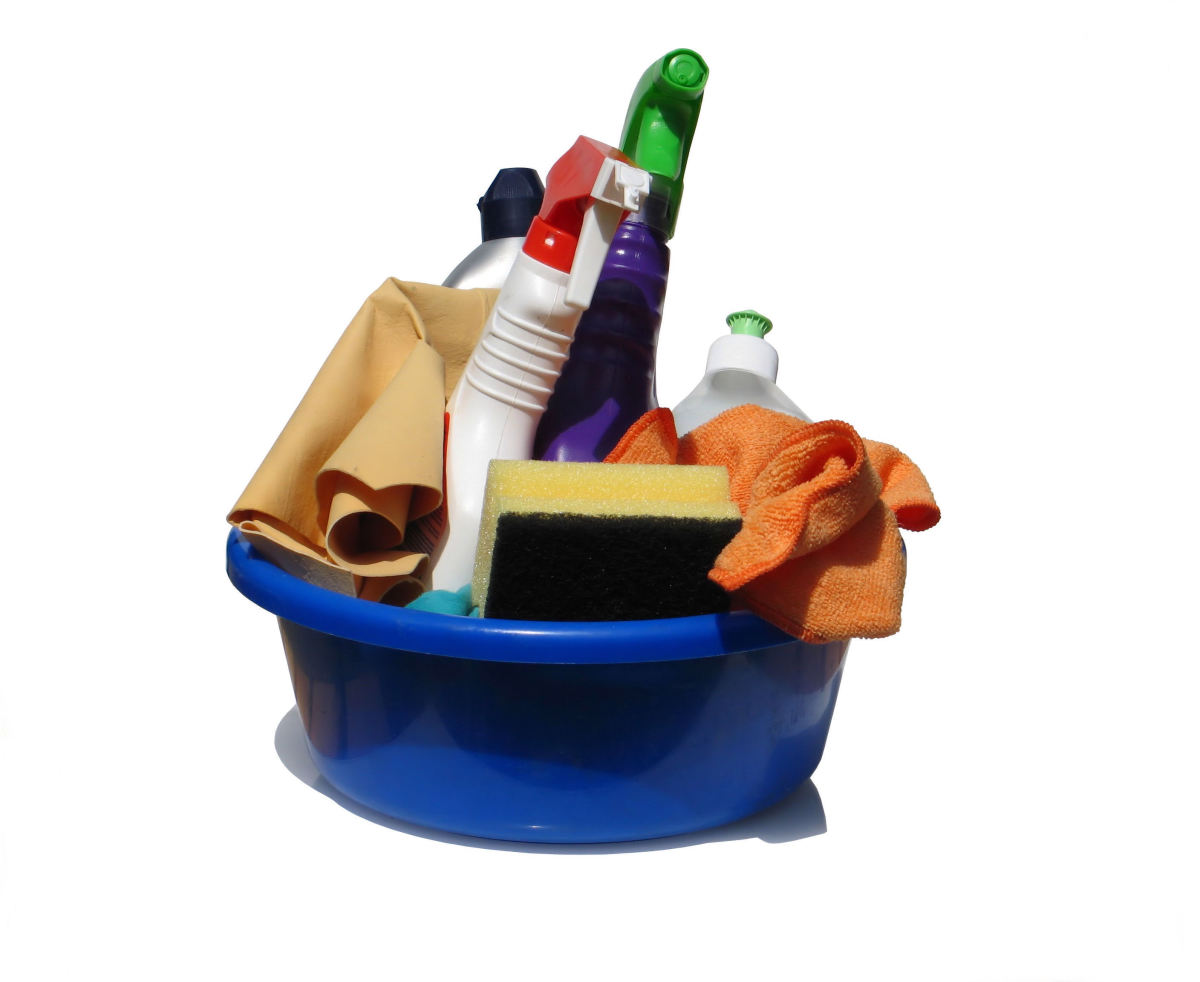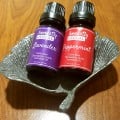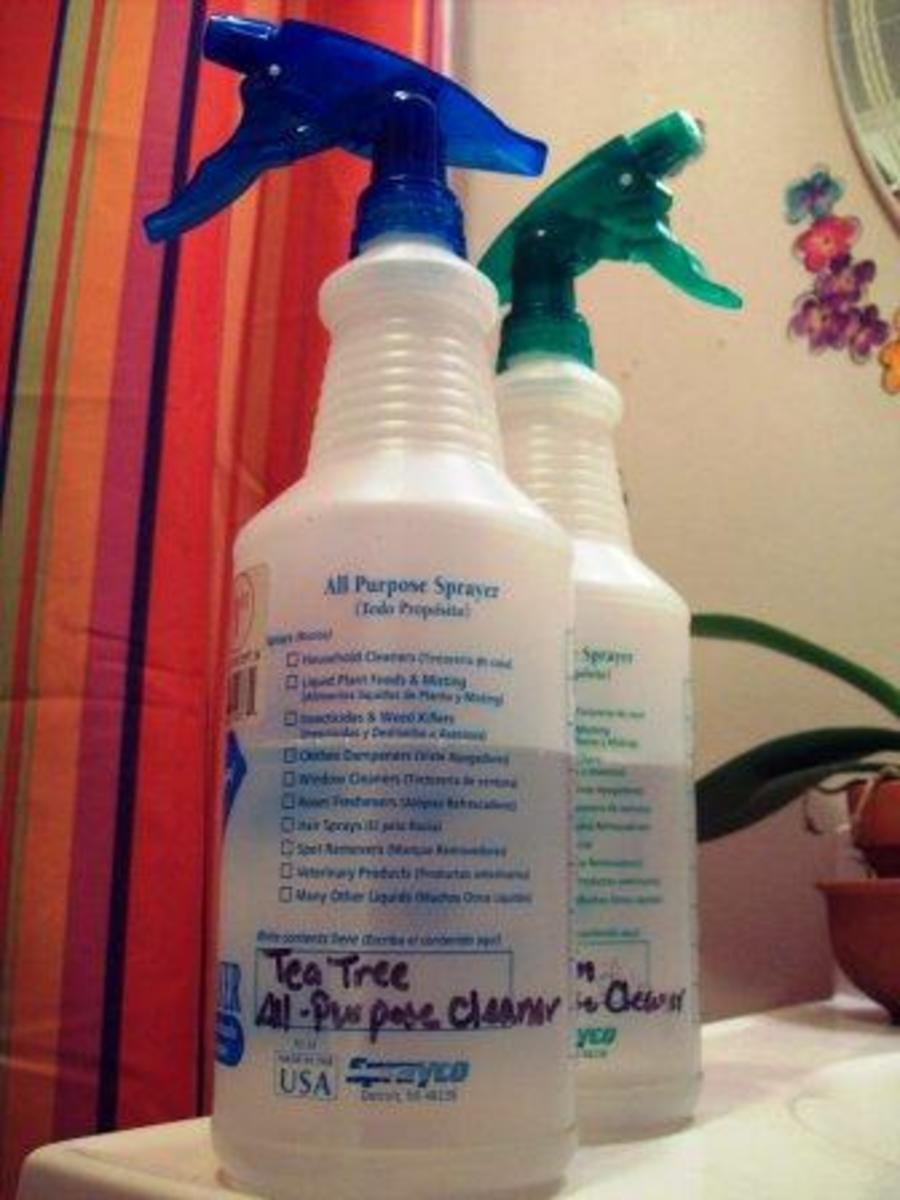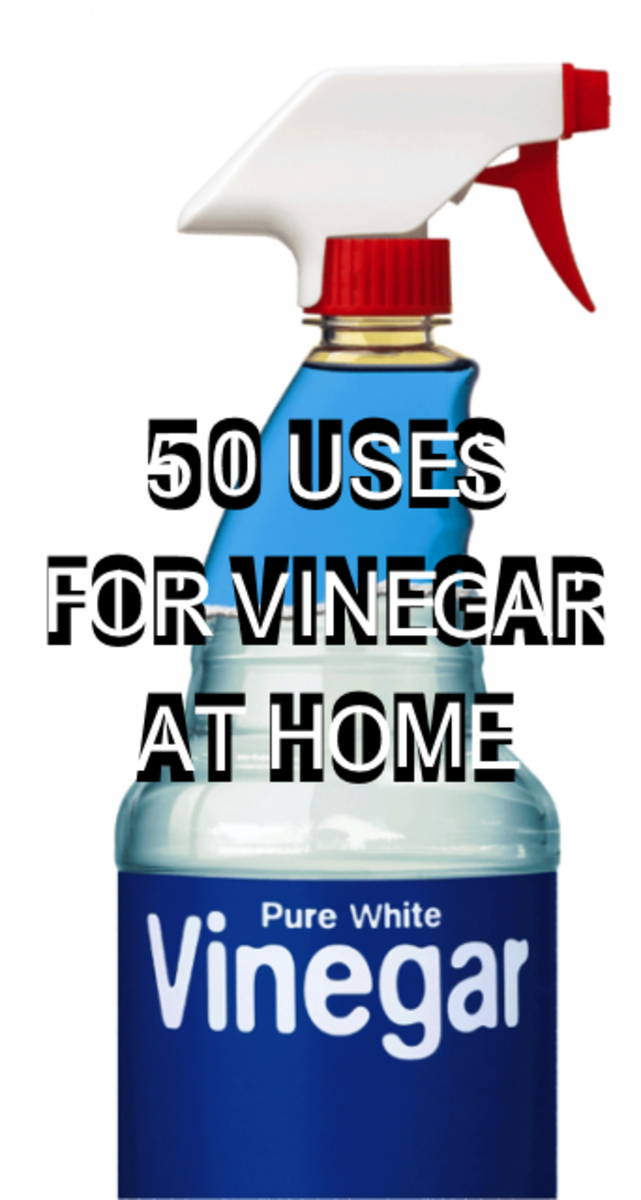Keep a Clean House and Your Money; Try Going Green with Eco-Cleaning
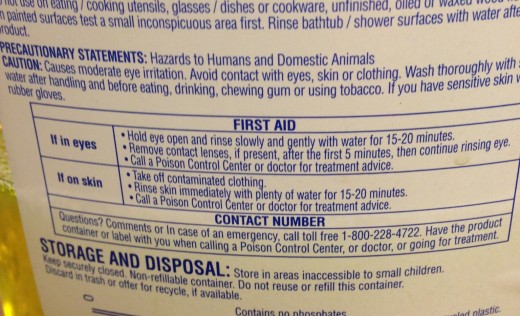
Motivation
How much money do you spend on cleaning supplies each month? How necessary are they? If you are like my family, we were spending hundreds of dollars a month on cleaning supplies because we thought that we had to in order to keep our house sanitary and clean. Anyone familiar with my writing knows that this is a prelude to my favorite theme: Think for yourselves and do the research. Understanding that marketing executives are paid very high salaries to convince you to purchase things that you don’t need is the first step in freeing yourself from the brainwashing.
The ability to clean a surface of dust, dirt, and greasy grime is the goal. What does it take to accomplish that goal? Marketing commercials on television will try to convince you that the one product that they are advertising is the only one that can work for you. Pay whatever you have to in order to possess that product or else be considered a disgusting person with a filthy house. If that sentence doesn't offend you, then you have already been brainwashed. I was. I never even considered that it wasn’t real and was actually damaging our environment more than helping it.
Then one day while shopping for cleaning products at Wally World, I realized that I was reading something interesting. Many of the cleaners were advertising that they contained vinegar for a sparkling shine. Something about that sentence hit a cord of remembrance in my old brain. My mother and grandmother always taught me to wash windows and surfaces with vinegar to get them super clean. If something needed coarse scrubbing use baking soda. I wondered about germs and bacteria. So I took advantage of the information age and began to research why so many products would advertise that they contained vinegar.
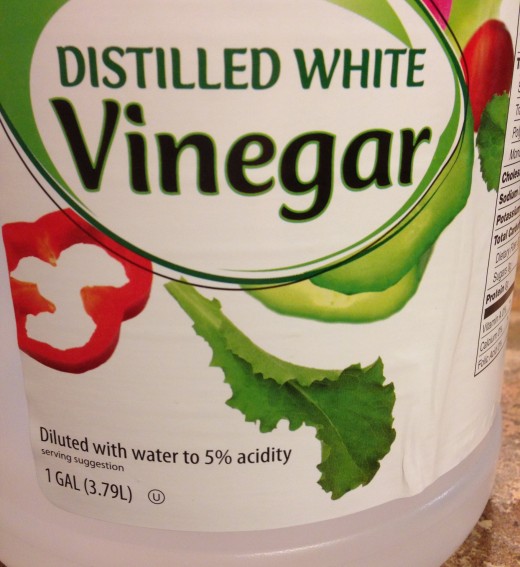
Vinegar and Bleach
Truth is stranger than fiction. The truth is that vinegar does kill germs and bacteria. It does it very effectively. According to the website “Black Toxic Mold.com” it not only kills 82% of molds but also kills black toxic mold. A recent news article by Megan Cole of The Canadian Press dated March 14, 2014 expresses my opinion quite well. If you can’t eat it yourself, don’t put it on food surfaces. There were many scholarly resources that reported that vinegar does kill germs, mold and bacteria. However, the United States Federal Government advises in their guide to sanitizing child care centers that it is not effective enough alone to sanitize, only to clean. What that means is not that a person needs to rush out and purchase tons of expensive commercialized cleaning products. Can you ingest a small quantity safely? Most of the time the active sanitizing ingredient is bleach or alcohol. Both of which, if properly diluted will not kill you in small doses. That is why diluted bleach is the only recognized sanitizing cleaner for child care centers. So why are these bottled cleaners so poisonous? Because, they also contain dangerous detergents that are not actually necessary to achieve the original goal of cleaning.
So all that is needed to clean a home sparkling and sanitized is vinegar, bleach, and baking soda? Yes. However, those of us who have grown up liking suds to clean our dishes, bodies, clothes, and hair will also want some type of soap. These days, I lean more toward real soap and less toward harsh detergents. Real soaps are made from a natural saponification of a fat or an oil when combined with lye. Natural lye is created when wood is burned into white ash. Anyone who has ever dropped the hot dog or marshmallow into the campfire can tell you that although it is gritty, it won’t kill you.
I became a woman on a mission. I started with an inventory of my linen closet where most of the household cleaners were kept. I found it full of toxic poisons. Caution statements and first aid information was on all of the bottles. Then I ran a test. I cleaned my kitchen with vinegar. Not only did it clean better, but it cleaned off the residue that I had not even known was left behind by the cleaners that I had been using for years. Suddenly, my house was sparkling. The floors were shiny without feeling sticky. I could not believe it. I started using a little diluted bleach to sanitize any surface that needed it. Soap with a little rubbing alcohol makes another great germ buster for pennies. Going cheaper was also proving to be going greener.
I learned that it was possible to have an even cleaner house that was healthier for my family and pets as well. I threw out the nasty cleaners and my cleaning expense bill plummeted. A full gallon bottle of vinegar can be purchased just about anywhere for around $1.50. Compare that to the leading kitchen cleaners that cost $6 to $13 dollars plus tax for just 12 ounces. You come up with great savings and cleaning won't contain enough poison to kill your family and your neighbors.
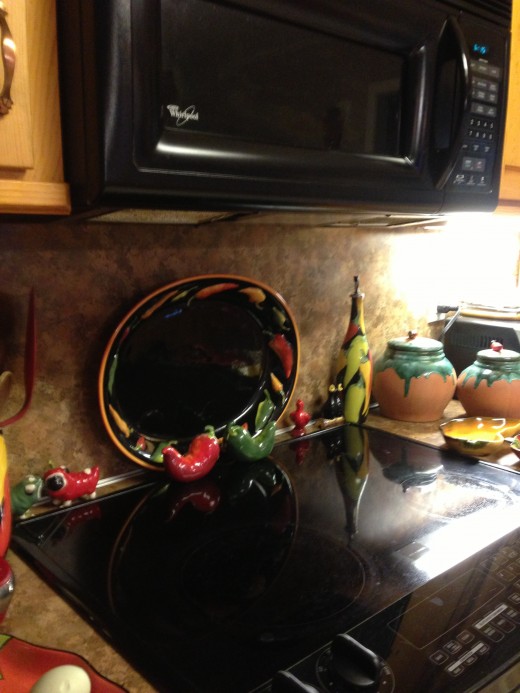
Yes this Really is My Kitchen
It has been four months now since I switched to eco-friendly cleaning and my budget has gotten healthier as well. I used to spend around $100 or more a month on household cleaners. Now I spend around $10 a month on replacement vinegar mostly. I use it for everything. I only put half the dishwasher soap in that I used to use and run the second cycle using only vinegar. My dishes sparkle and are actually cleaner. I even use it in my washing machine to deodorize and clean my laundry. Sparkling mirrors and windows are just an added bonus to the clean on all of the other surfaces that I use vinegar on. Now that I know that it kills mold and bacteria, I use it even more. Granted bleach is still the mainstay for sanitizing, but I don’t feel the need to sanitize every surface all the time, just periodically.
My favorite change, I purchased a Libman Freedom Mop and fill the container with vinegar. I now mop my floor every night with no hassles. Best of all, the mop pads are washable. I am much more conscious of reducing the amount of waste that my family puts into landfills. Having reusable mop pads that are kept as clean and bacteria free as my other home surfaces is important to me. Not having to carry around a big bucket was essential to the health of my already damaged back. Cleaning with vinegar and sanitizing with bleach also means less plastic packaging goes in to landfills. Often I reuse the empty bottles to put emergency water in the interior closet that we use as a storm shelter in bad weather. Going green with eco-cleaning options is not more difficult. It is easier. I will never go back to using poisons in my home.


